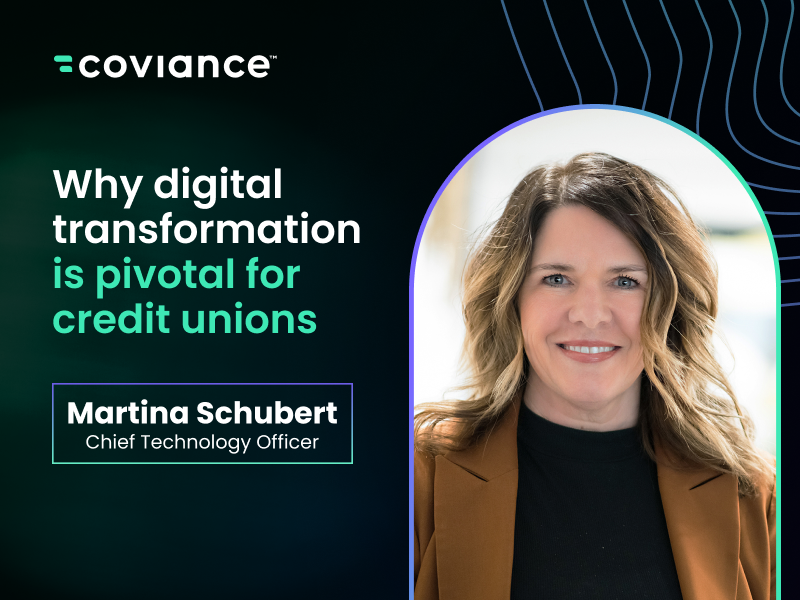Here’s What the 5 Biggest Innovations in the History of Lending Technology Have in Common
As the modern financial services market experiences a rapid influx of advanced technology, there are many choices before the nation's credit unions and community banks.

.png)
As the modern financial services market experiences a rapid influx of advanced technology, there are many choices before the nation’s credit unions and community banks. But if history has shown us one thing, it’s that innovations designed with the borrower in mind have the most significant and long-term impact.
What Does That Mean for Today’s Community Financial Institutions?
Basically, focus your energy on integrating consumer-centric technologies – the ones with the potential to take the experience you deliver to the next level of amazing. In other words, choose technology capable of solving real problems for financial consumers.
The Top 5 Advances In Lending Technology and Innovation
Over the past 60 years, financial services has innovated to solve customer problems in five big ways, each of them based on solving a real problem for consumers. Every single one has lived on in one form or another, proof that innovations rooted in making financial lives easier, safer or more enjoyable are the ones with staying power.
1930s: The Drive-up Teller and the Original Lending Innovation
While we have a tendency to think of drive-up windows as an innovation of the 1970s and 1980s, the first recorded use of a bank drive-up was actually in 1930 at the Grand National Bank of St. Louis, Missouri. Automobiles were still something of a luxury at this point in time; perhaps that’s why Grand National only took deposits through the drive-up. In 1946, as cars were becoming more widely adopted, the Exchange National Bank of Chicago evolved the drive-up, allowing both deposits and withdrawals. Tellers sat behind bulletproof glass while customers put in and took out money through sliding drawers. The innovation of the drive-up teller was built specifically for banking (and driving) customers – to make interacting with the financial institution fast, easy and enjoyable in a way that fit their evolving lifestyles.
1950s: The Credit Card Puts Lending Technology in the Hands of the Borrower
At one time in America, a big-ticket purchase required an even bigger wallet. Cash was king. Over time, however, retailers began to see the possibilities of extending credit to customers. Suddenly, purchasing appliances, furniture and other major items became easier for the average family. In 1958, Bank of America allowed its leaders to explore their curiosity. What if we changed the mechanism by which credit is both extended and used, they wondered. The bank mailed 60,000 small pieces of plastic to borrowers in Fresno, California, giving each a $500 line of credit. And with that one small-scale experiment, the modern credit card was born.
The massive success of the Fresno Drop, as it’s come to be known, launched an entire industry and fundamentally changed the way consumers, retailers and banks think about credit, lending and payments.
1970s: The ATM and Lending Software at the Speed of Now
The first ATM was installed by Chemical Bank in New York in 1969. While the technology has certainly evolved since that first machine was tested (and ultimately loved) by consumers, the premise of anywhere, anytime access to cash remains. Here again, the banking innovation was all about solving a problem for consumers – how can we get to our cash even when the bank is closed? Convenience, speed and accessibility to funds on the consumer’s time, not their financial institution’s, is what generated success for the ATMs and why they are still widely used nearly 50 years later.
2000s: Mobile Banking Through Lending Software and Apps
Digital banking is just one of many ways the smartphone has changed the way we live, work and play. Checking balances and paying bills has evolved to remote deposit capture, digital wallets and a slew of other features that make it possible for such a thing as an e-bank to even exist. Having an app, through which consumers easily and quickly plow through their financial to-do lists, is no longer a convenience; it’s an absolute expectation across generations. Being able to deposit a check from anywhere in the world, send money to anyone anywhere, and even sign legal documents on your phone seemed impossible a decade ago; today’s it’s becoming a way of life.
NOW: Coviance and Lending Technology for the 21st Century
The always on, always connected world in which we live has raised expectations for banking consumers, and that certainly extends to borrowers looking for a fast ‘yes’ on everything from a first mortgage to a HELOC. Web-based digital hubs like LenderClose are changing the way community financial institutions solve one of the biggest problems for today’s borrower – the slow-moving wheels of real estate loan underwriting. What is a convenience today quickly becomes the expectation tomorrow. Digital companies like Rocket Mortgage and Zillow are moving the borrower experience along that journey quickly. With rising expectations for speed, security and digital-first delivery, community lenders can look to the past to see the future.
Are You Ready To Innovate Your Lending Technology?
Join more than 425 community banks and credit unions in trusting Coviance to automate their home equity lending. Contact us to find out how we can do the same for your lending team.



.svg)

.png)


.png)





.png)






